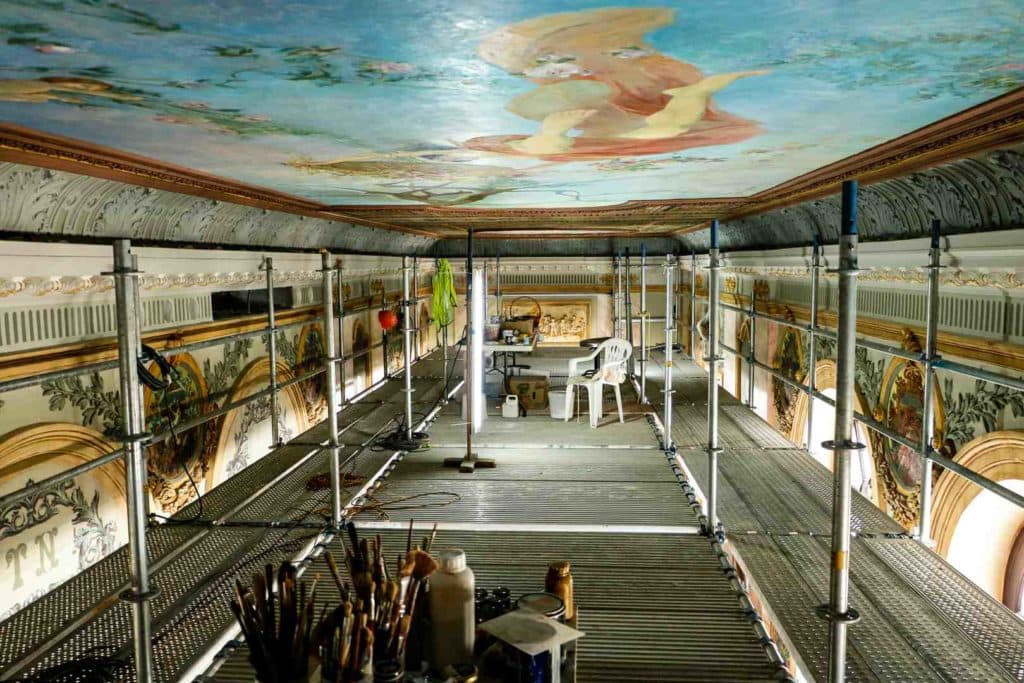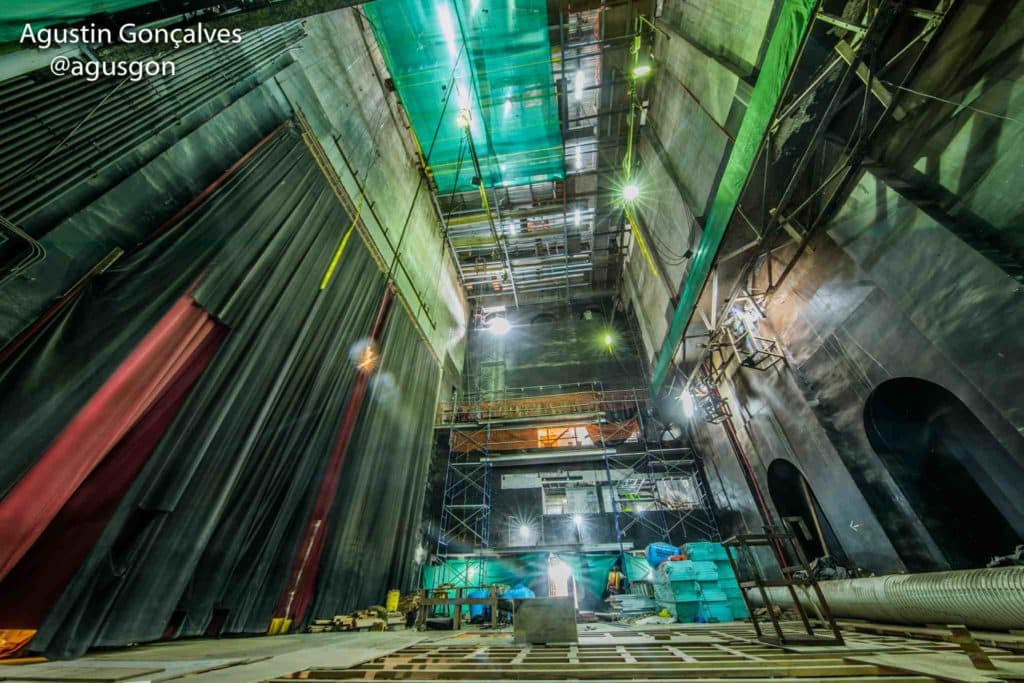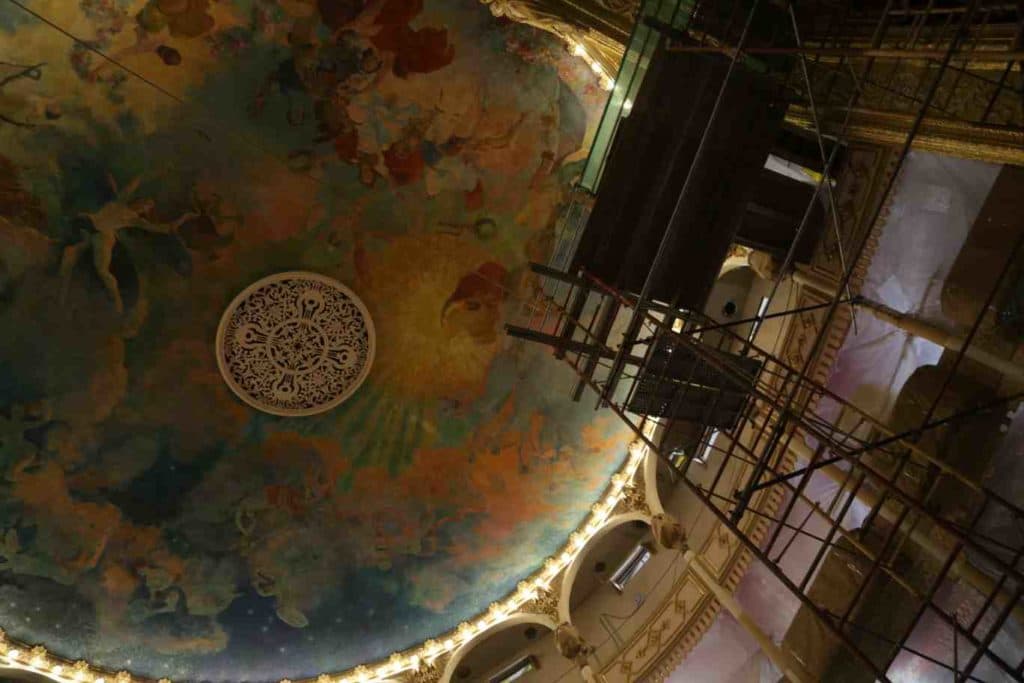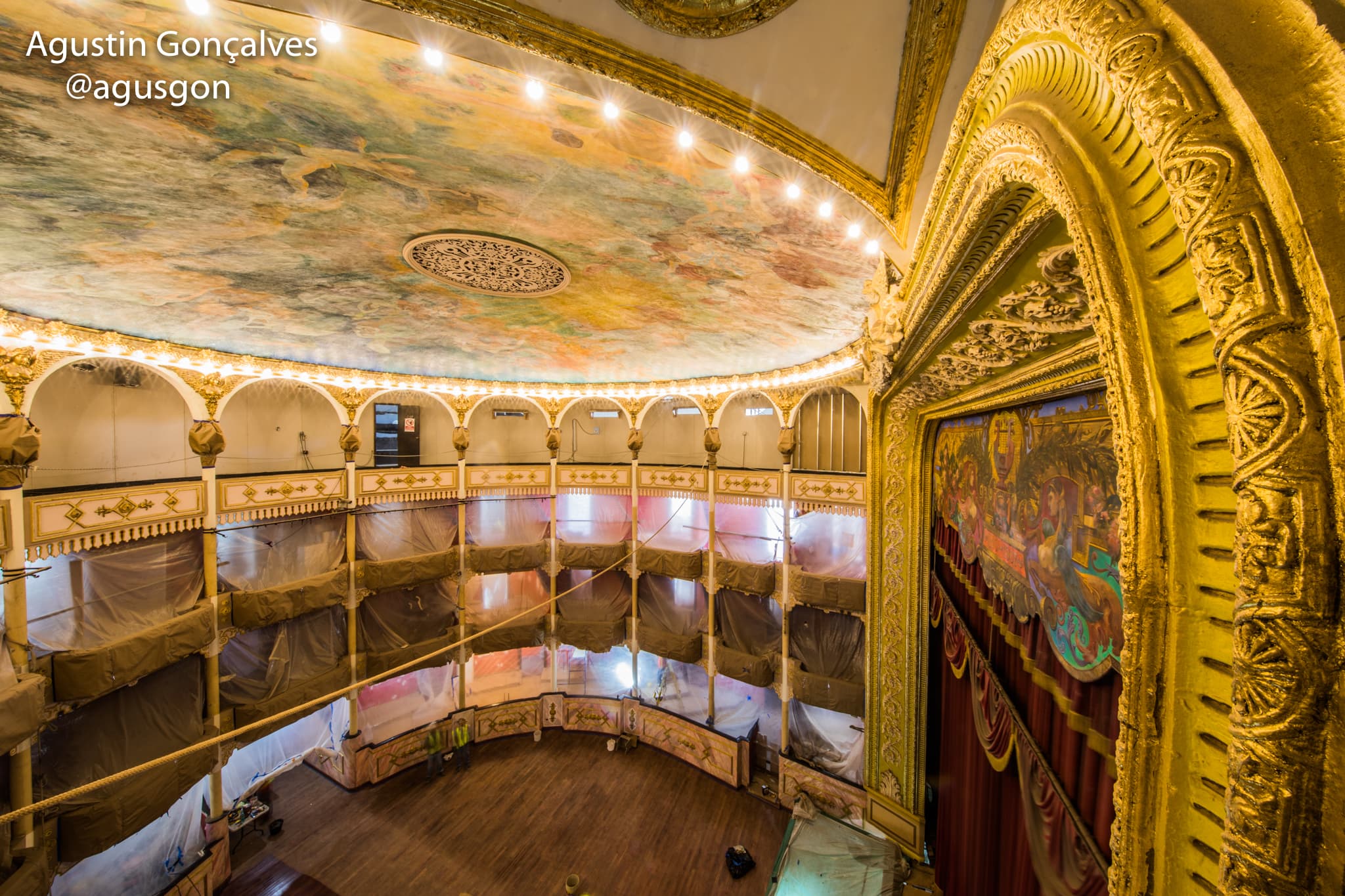If there is a place where every corner of it has witness our evolution as a nation it has been the National Theater. The official site of Panamanians and International artistic expressions. This historic place located In Casco Antiguo has been visited by important leaders from around the world, celebrities and incredibly talented people like Margot Fonteyn, a British first ballerina from the Royal Ballet of London. When being in front of this majestic World Heritage site you feel connected to the past, the present and future of an entire country. This is the way Cesar Robles (General Assesor of the National Institute of Culture) makes you feel when doing his introduction speech before our tour.

Robles describes well the four rehabilitation and restoration works (1940, 1970, 2003 and 2017) the theater has gone through since its inauguration in 1908. When going into the main hall we realized that this is the biggest patrimonial reatauración up to now. The mixture of architectonic and decorative details evokes the Renaissance style and the soul that takes you back in time when president Manuel Amador Guerrero order its construction and architect Genaro Ruggieri had the idea of designing it with an architecture that would resemble the opereta theater of Italian style.

While we were walking down the halls that would lead us into one of the balcony sections, the restored lamps, hallways and floors makes us feel the splendor that has lasts over a 100 years. Soon the theater will open its doors again to more renowned and talented actors, actresses, musicians and multiple artistic groups from Panama and abroad. But this time with the technological advancements that positions this theater along with the bests of the world. From the top we can see the dome of the main hall called “The Birth of a Republic”, which evokes the independence of Panama, the most emblematic painting of Panamanian artist Roberto Lewis (1874-1949). Each of the paintings in the building were painted by Lewis in his studio in Paris and then shipped to Panama to be installed.
Watching the stage and the impressive architectonic and decorative details that evoke a Renaissance style in the main hall, you can visualize how was it on the first day the theater open its doors to the artistic opera called “Aida” from Giuseppe Verdi, in charge of the Italian Company of Mario Lombardi. You can also watch the impressive candlestick installed in 1940, an element Lewis itself rejected, since it would not allow people to observe clearly the painting on the roof of the dome.

Up to now, 15 million dollars have been invested in this restoration and when finally getting to the main floor area where the seats are located, Robles reviews the new capacity of the theater: 853 people sitting, distributed in amphitheater, main floor, two stories with balconies, gallery and the orchestra pit. Definitely the artists and the audience will live unique experiences when the doors opens in late August of this year.
When walking back out to the exterior you can’t be more excited for all that is to come related to the artistic and cultural development. The National Theater Patronage has planned not only artistic shows within the complex, but also in the surrounding areas of Casco Antiguo and other sectors of Panama City. Outside we notice the restoration of the main facade that is composed of six Crowned Arcades, also in both sides of the main entrance there are two sculptures that represent the muse of lyrics and music and above there are six medallion that pay homage to people from the golden century like Wagner, Shakespeare, Cervantes, Molière, Rossini and Lope de Vega.
Robles also explained to us that Carlos Aguilar, director of Panama Institute of Culture, has organized a reinauguration season that will coincide with the 111 years celebration starting from September 14 up till the end of the year. Part of the list of shows coming are contemporary dance, folkloric galas, the musical “1903″, a concert with the National Symphonic Orchestra and the Roberto Lewis, Ricardo Miro and Roque Cordero National Awards Ceremonies. They are working to reach a larger audience and for that reason more artistic disciplines will have a place in the theater. The National Theater, will not only continue to be a historic and architectonic pride, but also a renewed engine for culture that will promote tourism nationally and internationally , generating benefits that will be felt throughout the country.







